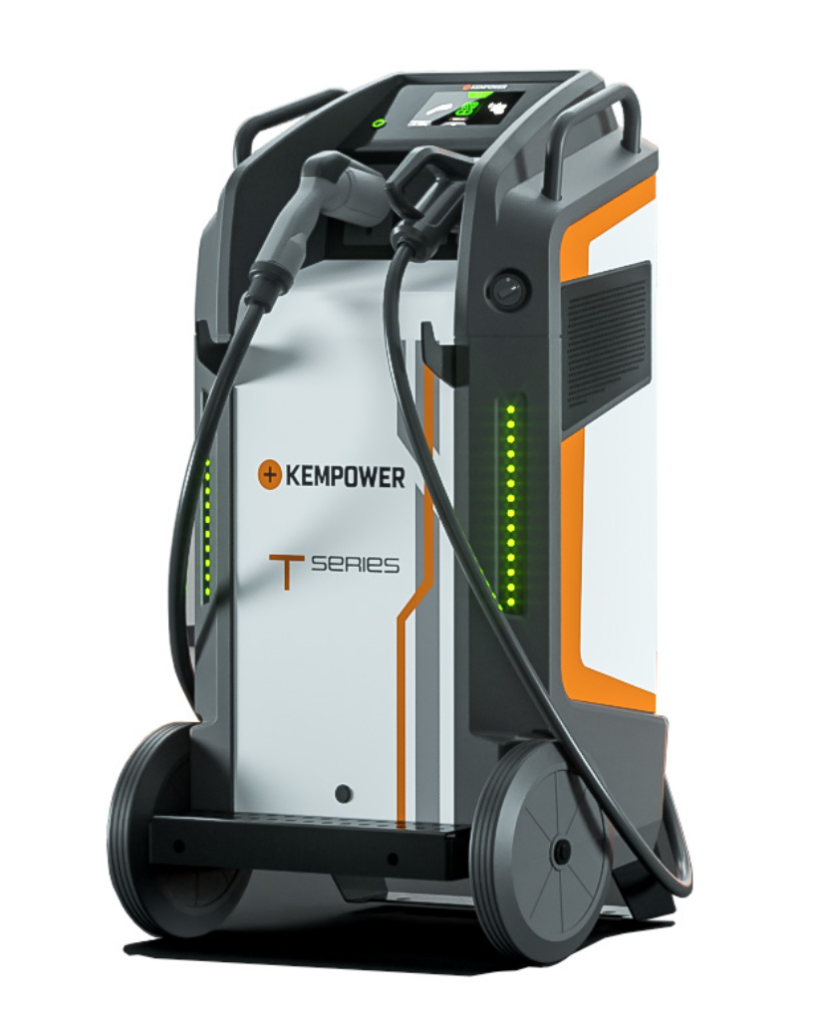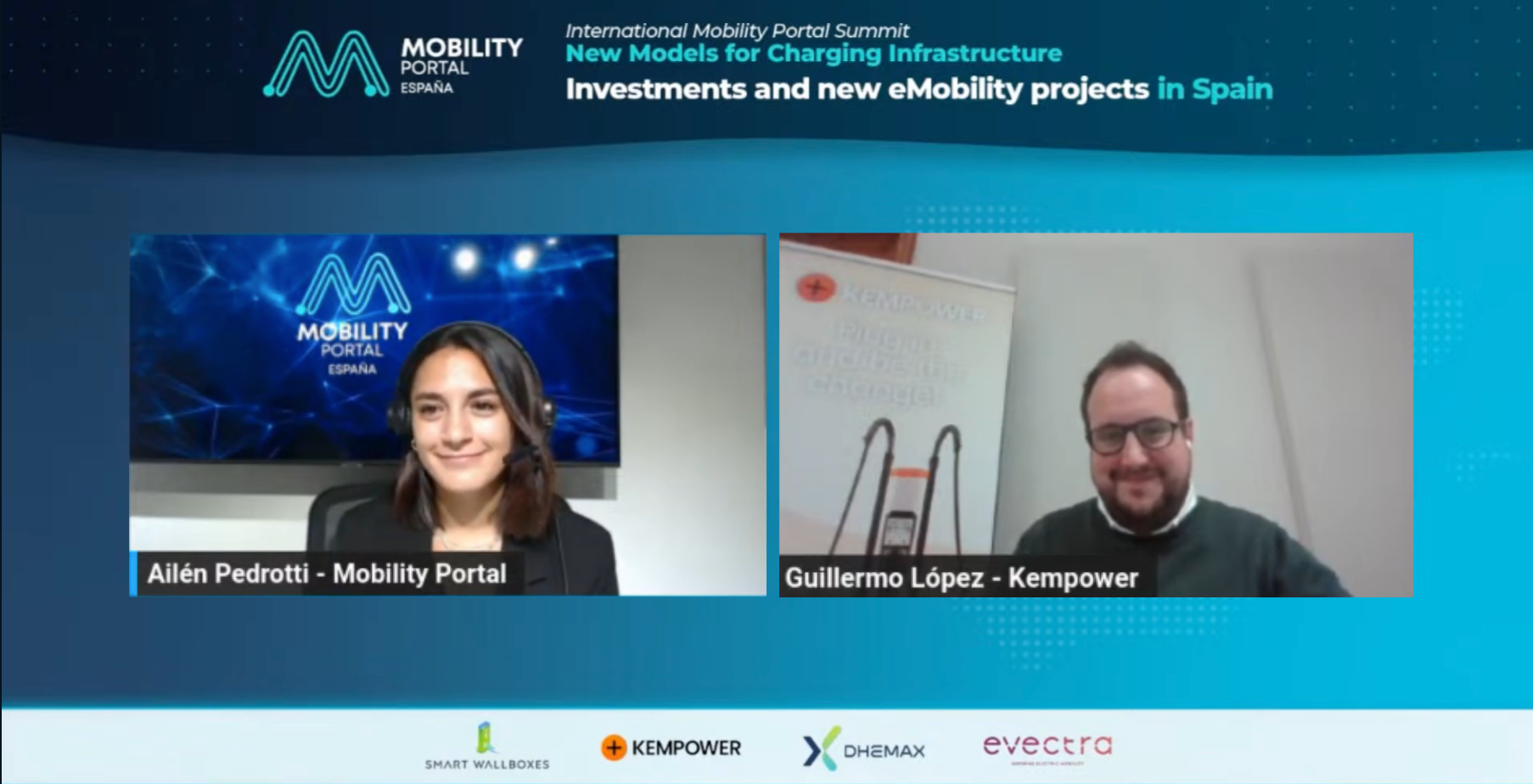The anxiety surrounding “what is yet to come” currently captivates the 100 per cent electric heavy transport sector.
And it is here where Kempower provides answers and lays the groundwork: technological innovations will arrive shortly, but the established solutions should not be overlooked.
“What’s happening with the MCS is akin to the fever surrounding cars and the desire for rapid charging, yet ultimately, with the available technology, it’s more than sufficient,” asserts Guillermo López Arias, Head of Sales for Iberia & LATAM at the company.
The arrival of the Megawatt Charging System (MCS) is imminent, that’s a fact.
The first prototypes from the Finnish company will arrive throughout 2024.
What will they be like?
They will feature a high-power liquid-cooled satellite with MCS charging connectors and two 600 kilowatts power units.
And it’s worth noting that the total power of the initial solution delivery will be 1.2 MW.
Currently, electric trucks are often charged with a DC fast charger overnight, at the destination warehouse, or while on the move along highways.
But larger eVehicles require higher charging powers, and this is where Kempower’s future offering will shine.
Forecasts indicate that the DC charging market for commercial vehicles in Europe and North America will experience a compound annual growth rate of 37 per cent until 2030.
“The MCS is coming, and it will be incredible to charge at such high powers,” recalls López Arias.
To which he adds: “However, many of these trucks charge in their depots, and there are already consolidated multimodal solutions for that. Therefore, let’s look to the future but not lose sight of the existing charging options.”
As a leading manufacturer in the charging infrastructure sector in Europe, Kempower must be prepared to launch new technologies, and the reality is that it is.
An example of this is the Power Unit, the “star charger” in its product portfolio.

It offers scalable power of up to 600 kilowatts and can dynamically distribute it, in real-time, to up to eight connectors simultaneously, in increments of 25 kilowatts.
This factor makes it unique in the current electromobility market.
It features 50 kilowatts modules each, allowing it to charge up to eight vehicles simultaneously.
It’s perfect for fleet electrification projects or even public charging and allows, with the small footprint of its dispensers, to maximize space in a garage, for example, and install only what is needed at that moment.
So, as the market grows, you only need to add another module, another Satellite (or dispenser), or a mix of both.
Large bus fleets have opted for this system, but why?
It allows the operator to size the installation to the power needed for their current operation, scaling it up when necessary in the future.

Another Kempower product available is the portable 40 kilowatts charger, the Movable Charger.
It features an industrial CETAC type plug, which can be connected and started easily.
It’s designed for workshops and dealerships for cars, trucks, or buses.
And that’s not all, as it also works to accompany buses or new trucks in their customer demonstration tests, or for any event where charging needs to be done provisionally.
Kempower’s perspective on eMobility subsidies
Amidst the transition to electric mobility, a factor that remains crucial is financing.
It is expected that by 2030, at least 50 per cent of new trucks in the European Union (EU) will be electric.
While only 4,000 units were registered in 2022, this number is projected to grow exponentially over the next six years, reaching 600,000 vehicles.
This estimate comes from Daimler Truck, Traton Group, and Volvo, as reported by the consulting firm Arthur D Little.
But to achieve these goals, a key point is being able to respond to the financing needs around these new segments.
In this regard, López Arias comments:
“Assistance is necessary right now because we are talking about a new technology that is up against another one, whose use has been established for over 100 years. Comparing them right now doesn’t make sense.”
From his perspective, initially, the aids will focus on convincing companies that this is the direction to take to progress.
And that’s why the competitive advantages of electric fleets must be demonstrated, and a “TCO (Total Cost of Ownership) that is beneficial, although we currently don’t have data on TCO with 100 per cent electric heavy vehicles,” must be achieved.
What needs to be done?
According to Kempower’s perspective, “we need to reach a point where we can equate” the prices between electric trucks and traditional ones.
Although it’s clear that their operation is much cheaper, competitiveness must be generated through their initial cost, and that can only be achieved through subsidies.
About Kempower
Kempower designs and manufactures fast DC charging solutions for EVs and machinery.
The development and production of the products have their roots in Finland, and most of the materials and components they use are locally sourced.
The company focuses on all areas of electric transportation, from cars, trucks, and electric buses to special machinery and vessels.
Kempower is listed on the Nasdaq First North Growth Market Finland.








